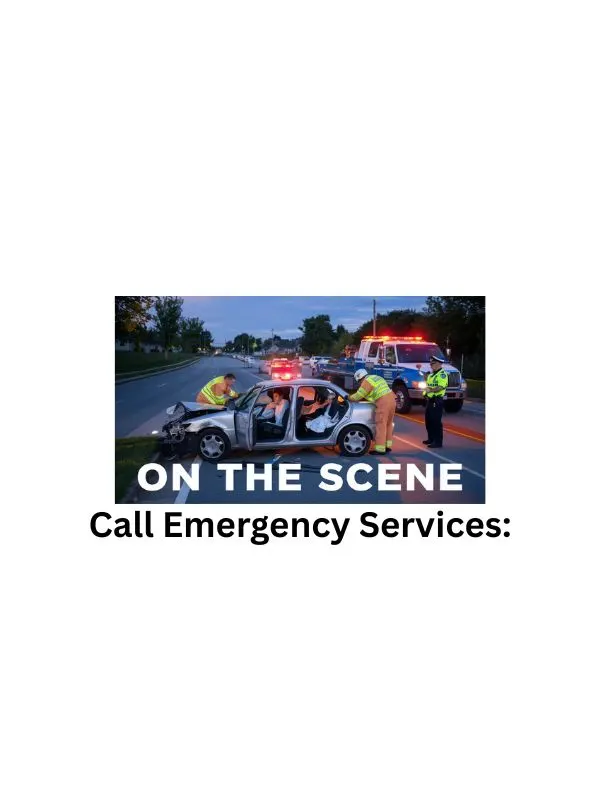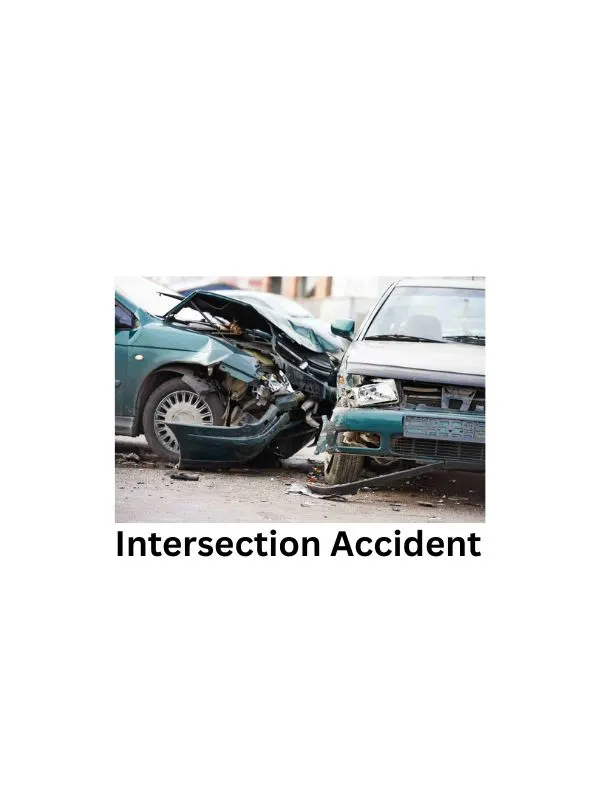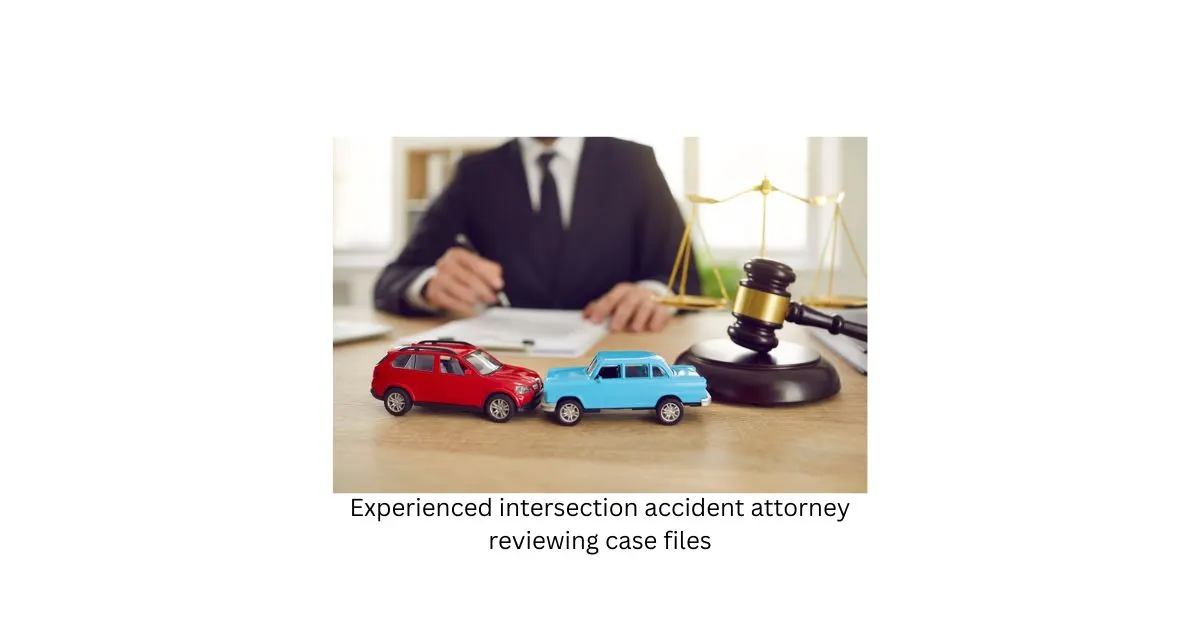7 Proven Strategies to Win Maximum Compensation: Best Intersection Accident Attorney Guide 2025
Intersections represent some of the most hazardous areas on our roadways, where multiple traffic flows converge and create complex driving situations. When intersection accidents occur at these critical junctions, victims often face serious injuries, mounting medical bills, and complicated legal challenges. Understanding your rights and knowing when to seek help from an experienced intersection accident attorney can make the difference between struggling with financial hardship and receiving the maximum compensation you deserve.
Finding the right intersection accident lawyer is crucial for navigating these complex cases successfully. A skilled intersection accident attorney understands the unique challenges these cases present and can help victims secure fair settlements for their intersection accident claims.
Understanding Intersection Accidents: The Hidden Dangers
What Makes Intersections So Dangerous?
Intersections are inherently risky because they bring together multiple streams of traffic from different directions. Drivers must make split-second decisions about right-of-way, timing, and navigation while processing information from multiple sources. This complexity creates numerous opportunities for human error and mechanical failure.
The statistics paint a sobering picture: intersection accidents account for approximately 40% of all traffic collisions, making them one of the leading causes of vehicle crashes nationwide. These accidents often result in more severe injuries than other types of collisions due to the nature of impact angles and the potential for multiple vehicle involvement.
What Is the Most Common Type of Accident at an Intersection?
The most common type of intersection accident is the angle collision, also known as a “T-bone” or side-impact crash. These intersection accidents typically occur when one vehicle fails to yield the right-of-way and strikes another vehicle on its side. Angle collisions are particularly dangerous because the sides of vehicles offer less protection than the front and rear, leading to more severe injuries for occupants.
When searching for an “intersection car accident attorney near me,” victims should prioritize finding lawyers with specific experience handling these complex intersection accident cases. The Insurance Institute for Highway Safety (IIHS) reports that intersection accidents have unique liability challenges that require specialized legal expertise.
Other common intersection accident types include:
- Rear-end collisions from sudden stops
- Left-turn accidents when drivers misjudge oncoming traffic
- Head-on collisions from wrong-way driving
- Pedestrian and cyclist strikes
The Leading Causes of Intersection Accidents
What Action Leads to Most Intersection Accidents?
The primary action that leads to most intersection accidents is the failure to yield the right-of-way. This encompasses several specific behaviors:
Running Red Lights and Stop Signs: Drivers who attempt to “beat” traffic signals or roll through stop signs create extremely dangerous intersection scenarios. These violations often result in high-speed angle collisions with devastating consequences that require immediate consultation with an intersection accident attorney.
Improper Left Turns: Making left turns across oncoming traffic requires careful judgment of speed and distance. Many intersection accidents occur when drivers misjudge these factors or attempt turns during yellow lights. The Federal Highway Administration (FHWA) identifies left-turn accidents as a major contributor to dangerous intersection statistics.
Distracted Driving: With the proliferation of smartphones and in-vehicle technology, distracted driving has become a major factor in intersection accidents. Drivers checking texts, adjusting GPS systems, or engaging with passengers may miss critical traffic signals or fail to notice other vehicles at dangerous intersections.
Most Common Driver Mistakes at Intersections
Understanding the typical errors drivers make can help both in prevention and in building legal cases:
- Inadequate Observation: Failing to properly scan for pedestrians, cyclists, and other vehicles
- Speed Misjudment: Approaching intersections too quickly to stop safely
- Signal Violations: Ignoring or misinterpreting traffic control devices
- Assumption Errors: Assuming other drivers will follow traffic rules
- Weather-Related Misjudgments: Failing to adjust driving for weather conditions
Types of Intersections and Their Unique Risks
The Three Main Types of Intersections
Four-Way Intersections: These traditional crossroads present the most complex traffic patterns, with vehicles potentially moving in all directions. They require the most careful attention to traffic signals and signs.
T-Intersections: Where one road ends at another, creating a “T” shape. These often involve right-of-way confusion and are common sites for angle collisions.
Roundabouts: Circular intersections designed to improve traffic flow, but they can confuse drivers unfamiliar with proper navigation techniques.
Which Type of Intersection Is Deadliest?
Four-way signalized intersections, particularly those in urban areas with heavy traffic, tend to be among the deadliest. The complexity of multiple traffic streams, combined with high speeds and driver impatience, creates a perfect storm for severe accidents. However, any intersection can become dangerous when proper safety measures aren’t followed.
Immediate Steps After an Intersection Accident

What Is the First Thing You Should Do Immediately Following a Collision?
The immediate aftermath of an intersection accident is crucial for both safety and legal purposes. Here’s what victims should prioritize:
Ensure Safety First: If possible, move vehicles out of traffic lanes to prevent additional collisions. Turn on hazard lights and set up emergency flares or triangles if available.
Call Emergency Services: Always call 911, even for seemingly minor accidents. Police reports are valuable documentation, and medical personnel can identify injuries that may not be immediately apparent.
Document Everything: Take photographs of vehicle damage, the accident scene, traffic signals, and any relevant road conditions. Get contact information from all parties involved and any witnesses.
Critical Mistakes to Avoid
Never Admit Fault: Avoid making statements like “I’m sorry” or “It was my fault.” These admissions can be used against you later, even if you were not actually at fault.
Don’t Refuse Medical Attention: Adrenaline can mask injury symptoms. Accept medical evaluation even if you feel fine initially.
Avoid Quick Settlement Offers: Insurance companies may offer immediate settlements that seem attractive but are often far below fair compensation values.
Understanding Your Legal Rights and Compensation
How Much Can You Sue for Pain and Suffering?
Pain and suffering damages vary significantly based on several factors:
- Severity and permanence of injuries
- Impact on daily life and future earning capacity
- Quality of life changes
- Emotional trauma and psychological effects
There’s no standard formula, but settlements can range from thousands to millions of dollars depending on circumstances. Serious intersection accidents often result in substantial pain and suffering awards due to the severe nature of injuries typically sustained.
Maximizing Your Settlement: Strategic Approaches
Comprehensive Medical Documentation: Maintain detailed records of all medical treatments, including ongoing therapy and rehabilitation needs.
Expert Testimony: Medical experts, accident reconstruction specialists, and economic damage experts can strengthen your case significantly.
Thorough Evidence Collection: Beyond immediate scene documentation, gathering traffic camera footage, witness statements, and maintenance records for traffic control devices can be crucial.
Professional Legal Representation: An experienced intersection accident attorney understands the nuances of these complex cases and can navigate insurance company tactics effectively.
The Settlement Process: What to Expect
How Long Do Most Accident Settlements Take?
Settlement timelines vary considerably, but most intersection accident cases resolve within 6-18 months. Complex cases involving severe injuries or disputed liability may take longer. Factors affecting timeline include:
- Extent of injuries and recovery time
- Clarity of fault determination
- Insurance company cooperation
- Complexity of damages calculation
What Constitutes a Good Settlement Figure?
A fair settlement should cover:
- All medical expenses (current and future)
- Lost wages and earning capacity
- Property damage
- Pain and suffering
- Rehabilitation costs
- Necessary lifestyle modifications
The “good” settlement amount varies by case, but it should adequately compensate for all losses without requiring victims to bear financial hardship from someone else’s negligence.
Why You Need an Intersection Accident Attorney: Specialized Legal Expertise
Specialized Knowledge of Complex Intersection Accident Cases
Intersection accidents often involve complex liability questions, multiple parties, and sophisticated legal principles. An experienced intersection accident attorney brings specialized knowledge that general personal injury lawyers may lack. The intersection accident lawyer understands the unique challenges these cases present and can effectively navigate the complex legal landscape.
Technical Expertise: Understanding of traffic engineering, accident reconstruction, and medical complexities specific to intersection accidents Insurance Company Experience: Knowledge of tactics used to minimize payouts for intersection accident claims
Negotiation Skills: Ability to secure fair settlements without unnecessary litigation for intersection accident cases Trial Experience: Willingness to take intersection accident cases to court when fair settlements aren’t offered
According to the American Bar Association (ABA), specialized legal representation significantly improves outcomes in complex intersection accident cases. An intersection accident attorney with proven experience can often secure settlements 3-4 times higher than self-represented victims.
When to Contact an Intersection Accident Attorney
Seek consultation with an intersection accident lawyer immediately if:
- Injuries are serious or permanent from the intersection accident
- Fault is disputed in the intersection accident case
- Multiple parties are involved in the intersection accident
- Insurance companies deny claims or offer inadequate settlements for intersection accident damages
- You’re unsure about your rights regarding the intersection accident
The National Association of Personal Injury Lawyers recommends consulting with an intersection accident attorney within 24-48 hours of the incident to preserve crucial evidence and protect legal rights.
Preventing Future Intersection Accidents
Six Clues That an Intersection Is Ahead
Recognizing approaching intersections early allows for proper preparation:
- Traffic signal visibility in the distance
- Cross-street signs or markings
- Changes in building patterns or development
- Increased pedestrian activity
- Lane configuration changes
- Warning signs indicating upcoming intersections
Making Intersections Safer: Community and Individual Responsibility
Individual Driver Actions:
- Reduce speed when approaching intersections
- Eliminate distractions
- Make complete stops at stop signs
- Use turn signals consistently
- Scan for pedestrians and cyclists
Community Infrastructure Improvements:
- Better lighting and visibility
- Clear signage and road markings
- Proper signal timing
- Regular maintenance of traffic control devices
Finding the Right Legal Representation
Qualities to Look for in an Intersection Accident Attorney

When searching for legal representation for your intersection accident case, consider these essential qualities:
- Specific experience with intersection accident cases and dangerous intersection litigation
- Track record of successful settlements and verdicts in intersection accident lawsuits
- Resources to handle complex intersection accident investigations
- Communication style and accessibility for intersection accident clients
- Fee structure and payment arrangements for intersection accident cases
The State Bar Associations provide directories of qualified intersection accident attorneys in your area.
Questions to Ask Potential Intersection Accident Attorneys
- How many intersection accident cases have you successfully handled?
- What was the outcome of similar intersection accident lawsuits?
- How will you investigate my specific intersection accident case?
- What are your fees and payment arrangements for intersection accident representation?
- How will we communicate throughout the intersection accident legal process?
The Legal Information Institute at Cornell Law School provides additional resources for understanding your rights in intersection accident cases.
Conclusion: Protecting Your Rights After an Intersection Accident
Intersection accidents can change lives in an instant, leaving victims with serious injuries, financial challenges, and emotional trauma. Understanding your rights and the legal process is crucial for securing the compensation you deserve. While no amount of money can undo the harm caused by negligent drivers, proper legal representation can ensure that victims receive the resources needed for recovery and future security.
The complexity of intersection accident cases demands experienced legal guidance. From investigating the accident scene to negotiating with insurance companies, an skilled intersection accident attorney serves as your advocate throughout the challenging process ahead. Don’t let insurance companies minimize your claim or pressure you into accepting inadequate settlements. Your recovery and future well-being depend on making informed decisions with professional legal support.
Remember, time limits apply to filing legal claims, so seeking consultation promptly protects your rights and preserves crucial evidence. If you or a loved one has been injured in an intersection accident, contact a qualified attorney to discuss your case and explore your options for securing justice and compensation.
People Also Ask: Common Questions About Intersection Accidents
How much does an insurance company pay for a car accident?
Insurance payouts vary significantly based on policy limits, fault determination, and damage extent. Minimum liability coverage ranges from $25,000 to $50,000 in most states, but serious intersection accidents often exceed these limits. Comprehensive settlements may include medical expenses, lost wages, property damage, and pain and suffering, potentially reaching hundreds of thousands or even millions in severe cases.
How many seconds should be between you and the car in front of you?
The standard rule is the “3-second rule” under normal conditions. At intersections, increase this to 4-6 seconds to allow for sudden stops or unexpected traffic signal changes. This extra following distance is crucial because intersection accidents often involve rear-end collisions when drivers can’t stop in time.
What is the leading cause of an intersection accident?
Failure to yield right-of-way is the leading cause, accounting for approximately 40% of intersection accidents. This includes running red lights, making improper left turns, and failing to stop at stop signs. Driver distraction and excessive speed compound these primary causes.
Which driver causes the most accidents?
Statistically, younger drivers (ages 16-25) and drivers over 65 have higher accident rates at intersections. However, any driver can cause accidents through negligent behaviors like distracted driving, aggressive driving, or impaired driving. Fault determination in intersection accidents often involves analyzing traffic signals, right-of-way rules, and witness testimony.
What if I feel pain days after an accident?
Delayed pain is extremely common after intersection accidents due to adrenaline masking symptoms initially. Conditions like whiplash, soft tissue injuries, and even traumatic brain injuries may not manifest symptoms immediately. Seek medical attention promptly and document all symptoms, as delayed medical treatment can complicate both your recovery and legal claims.
How much compensation for anxiety after a car accident?
Anxiety and PTSD following intersection accidents are legitimate damages that can significantly impact settlement amounts. Compensation for psychological trauma varies widely but can range from $10,000 to $100,000 or more, depending on severity and treatment requirements. Professional psychological evaluation and treatment documentation strengthen these claims.
What evidence supports pain and suffering claims?
Strong evidence for pain and suffering includes:
- Medical records showing injury severity and treatment duration
- Psychological evaluations documenting emotional trauma
- Personal journals detailing daily life impacts
- Testimony from family and friends about behavioral changes
- Expert medical testimony about future complications
- Photographs of injuries and accident scene
What is the formula for settlement amount?
While there’s no universal formula, insurance companies often use multipliers ranging from 1.5 to 5 times medical expenses for pain and suffering, depending on injury severity. However, experienced attorneys consider numerous factors including:
- Economic losses (medical bills, lost wages)
- Non-economic damages (pain, suffering, lost quality of life)
- Future expenses and complications
- Degree of fault and liability strength
What is the maximum you can sue for a car accident?
There’s typically no legal maximum for lawsuit amounts in intersection accident cases. However, practical limits include:
- Defendant’s insurance policy limits
- Defendant’s personal assets
- Strength of evidence supporting damages
- Jurisdiction-specific damage caps (rare in auto accident cases) Severe intersection accidents with permanent injuries or fatalities often result in multi-million dollar settlements or verdicts.
Are intersections high risk?
Yes, intersections are among the highest-risk areas for vehicle accidents. They account for approximately 40% of all traffic crashes and 20% of traffic fatalities. Urban intersections with heavy traffic, multiple lanes, and complex signal systems present the greatest risks.
What is the most important rule for approaching an intersection?
The most critical rule is to slow down and scan in all directions, even when you have the right-of-way. Many intersection accidents occur because drivers assume others will follow traffic rules. Always be prepared to stop, even on green lights, and watch for red-light runners, pedestrians, and cyclists.
Should I admit fault at the scene?
Never admit fault at an intersection accident scene. Even if you believe you caused the accident, multiple factors may have contributed, and full investigation often reveals different fault allocations. Stick to factual statements about what you observed, and let insurance companies and attorneys determine legal responsibility.
What makes an intersection safer?
Safer intersections typically feature:
- Clear sight lines without visual obstructions
- Proper lighting for night visibility
- Well-timed traffic signals
- Clear road markings and signage
- Appropriate speed limits
- Regular maintenance of traffic control devices
- Pedestrian and cyclist infrastructure
- Red-light cameras (in some jurisdictions)
Which type of collision is most damaging?
Head-on collisions typically cause the most severe injuries and fatalities, but at intersections, angle collisions (T-bone crashes) are particularly dangerous because they strike the sides of vehicles where occupant protection is minimal. High-speed angle collisions often result in severe injuries or fatalities.
What is the safest type of intersection?
Modern roundabouts are statistically the safest intersection type, reducing injury crashes by approximately 75% and fatal crashes by 90% compared to traditional signalized intersections. However, they require proper design and driver education to be effective.
Disclaimer : This article is for informational purposes only and does not constitute legal advice. Consult with a qualified attorney for guidance specific to your situation.


3 thoughts on “Top 7 Intersection Accident Attorney Secrets – Win Maximum Compensation Guide”